Best Aquarium Plants for Beginners 2025: Easy, Clean, and Pretty
Are Aquarium Plants Good for Fish Tanks
If you’re setting up a fish tank, you may wonder: “Can I use real plants?” or “Are they safe for fish?” The short answer is yes! Live plants are great for fish tanks.
Let’s look at why real plants are helpful, what myths to ignore, and how they make your tank better.
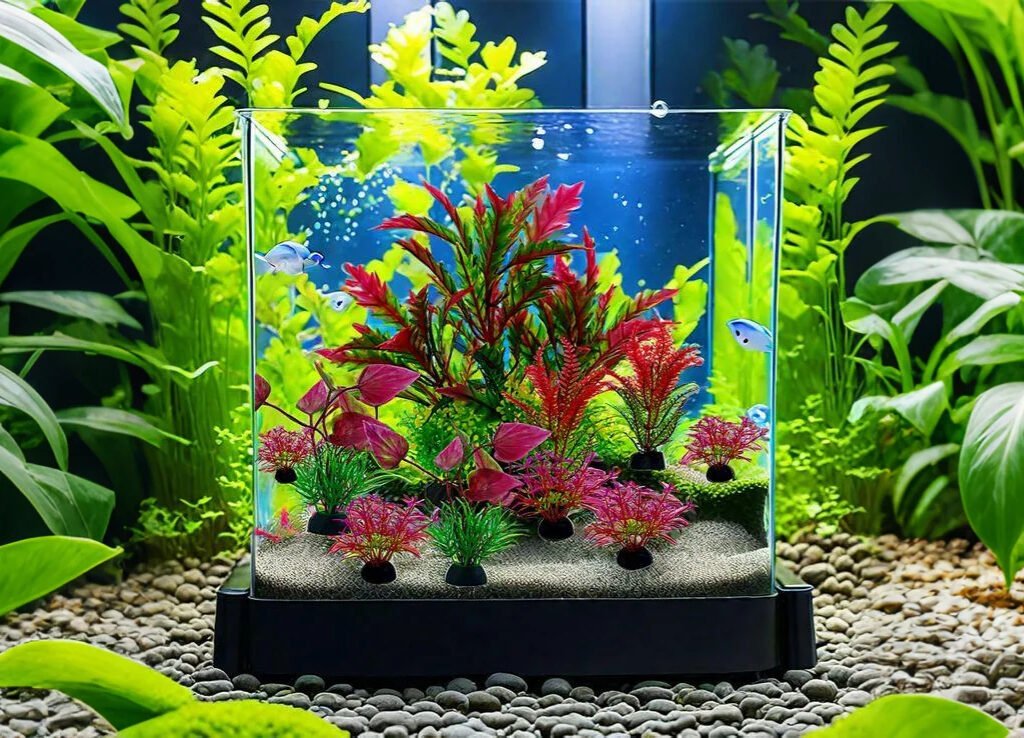
Why Live Plants Are Good for Your Tank
Live plants are not just for looks. They help your fish and make your tank safer and cleaner.
- Plants Add Oxygen
Like land plants, water plants use light to make energy. They take in carbon dioxide and give out oxygen. This helps your fish breathe better. It’s even more useful if your tank has low airflow. - Plants Help Clean the Water
Plants soak up waste like ammonia, nitrite, and nitrate. These waste products can harm your fish, but plants use them as food. This helps keep your water clean. - Plants Fight Algae
Algae grows fast if your tank has too much light or waste. Plants use the same nutrients that algae need, so plants help stop algae from taking over. - Plants Give Fish a Safe Place
Fish feel calm when they have places to hide. Plants give them shade and cover. This lowers stress and helps fish feel safe. Shy fish and species like bettas love this. - Plants Make Tanks Look Natural
A tank with real plants looks more like the wild. Fish act more naturally in these tanks. They may even breed or hunt for food like they do in nature.
Can I Use Real Plants in My Tank?
Yes, you can! Many people think plants are hard to care for, but lots of plant types are easy, even for beginners.
Try these:
These plants grow well in most tanks. They don’t need fancy lights or extra CO₂. Some don’t even need gravel to grow!
Fish like bettas, tetras, and shrimp love live plants. If you already have these fish, plants are a great upgrade.
Real Plants vs. Fake Plants
Fake plants are cheap and easy, but they don’t help your tank like real ones do.
Fake plants:
- Do not clean the water
- Can get dirty and need cleaning
- May have sharp edges that hurt fish
Real plants:
- Help clean the water
- Make oxygen
- Give fish a safe space
- Make tanks look better and feel natural
Still not ready for real plants? Fake ones are okay for now. Just make sure they are smooth and safe for fish.
Live plants are a smart choice. They help your tank in many ways. They clean the water, make oxygen, and give fish places to hide.
Best of all, many are cheap and easy to grow. Start with one or two simple plants. Your tank will look better, and your fish will be happier.
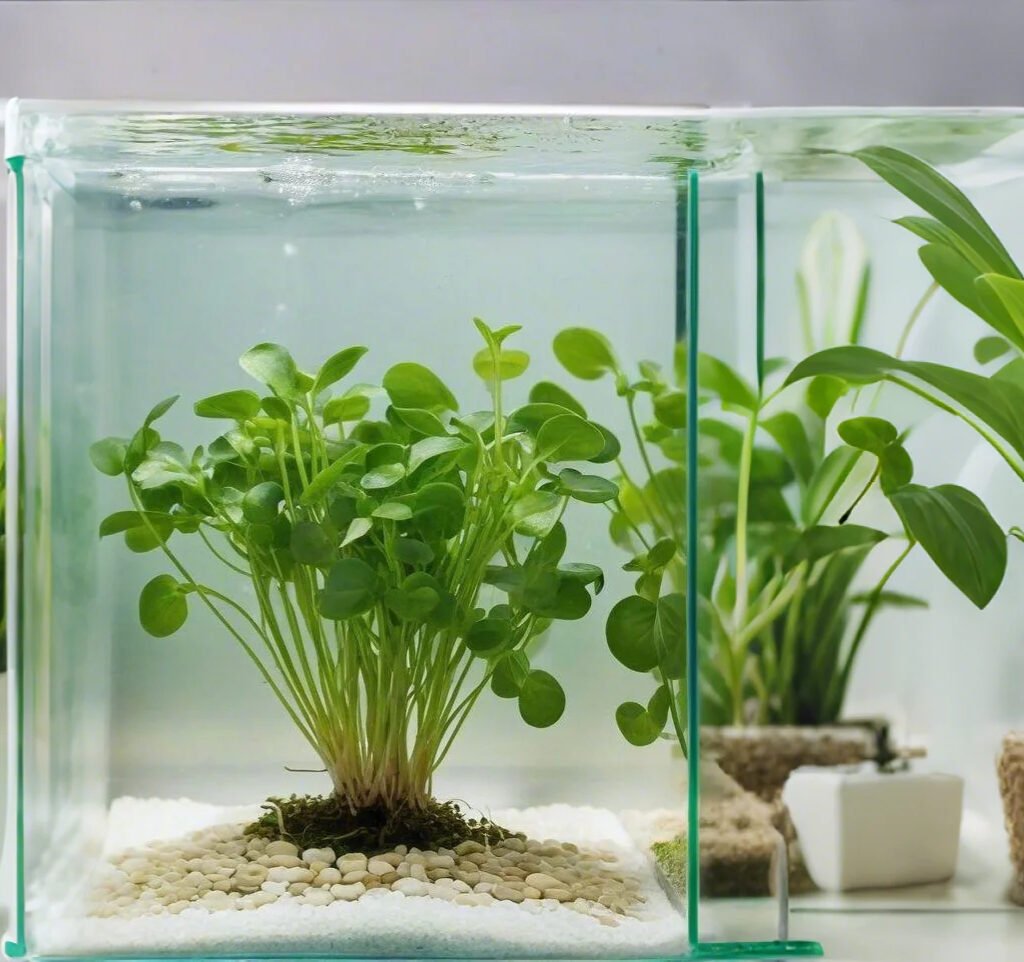
Best Plants to Put in a Fish Tank 2025
If you’re new to fishkeeping, you may ask: “What plants should I put in my tank?” Don’t worry — many great plants are easy to care for and grow well in most setups.
This guide will show you the best beginner plants for fish tanks. These plants are simple, pretty, and helpful for your fish.
Why Add Live Plants?
Live plants are not just for looks. They help your tank in many ways:
- They add oxygen
- They clean the water
- They fight algae
- They give fish a place to hide
- They make your tank look like a real river or lake
Best of all, some plants grow with little care. Let’s look at the top five!
Top 5 Easy Plants for Aquariums
These five plants are strong, safe, and need little work. You don’t need fancy lights or CO₂. Just add them to your tank and enjoy.
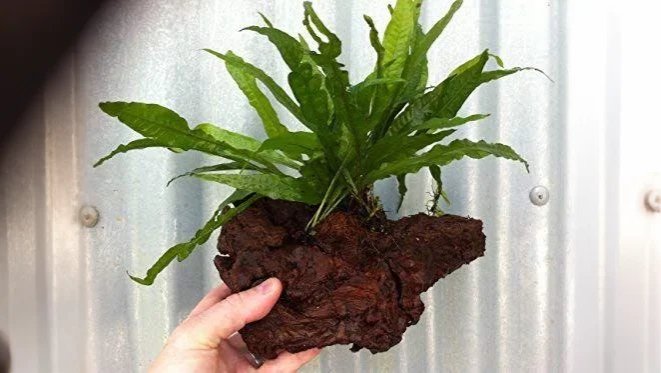
1. Java Fern
Java Fern is one of the best starter plants. You don’t plant it in gravel. Just tie it to wood or rocks.
- Light: Low to medium
- Growth: Slow
- Great for: Betta tanks, small tanks, low-light tanks
Fish don’t eat it much. It’s strong and grows well in many tanks.
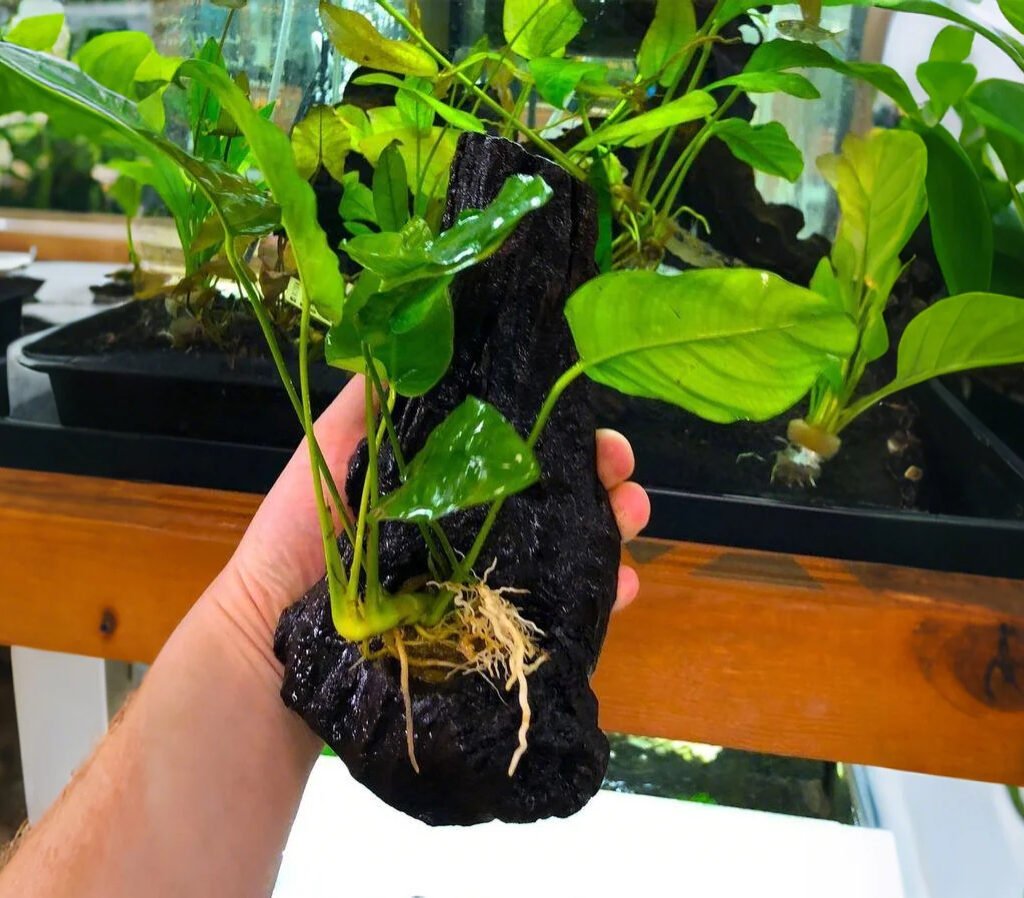
2. Anubias
Anubias is another great plant for new fishkeepers. Like Java Fern, it likes to grow on hard surfaces, not in the gravel.
- Light: Low to medium
- Growth: Very slow
- Great for: Shrimp tanks, nano tanks, betta tanks
Its thick leaves are strong. Fish don’t eat them easily.
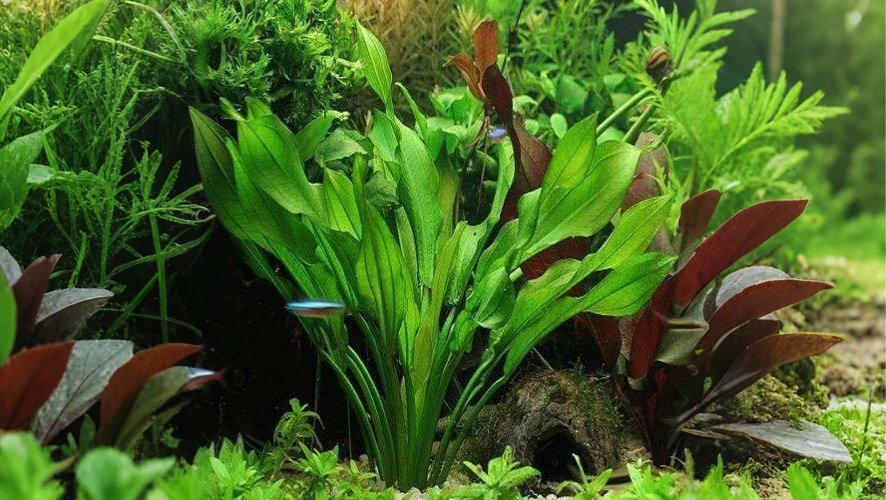
3. Amazon Sword
Amazon Sword is a big leafy plant. It grows wide and tall, so it needs space.
- Light: Medium to high
- Growth: Fast
- Great for: 10-gallon tanks or bigger
It loves a rich substrate with lots of nutrients. Root tabs help it grow faster.
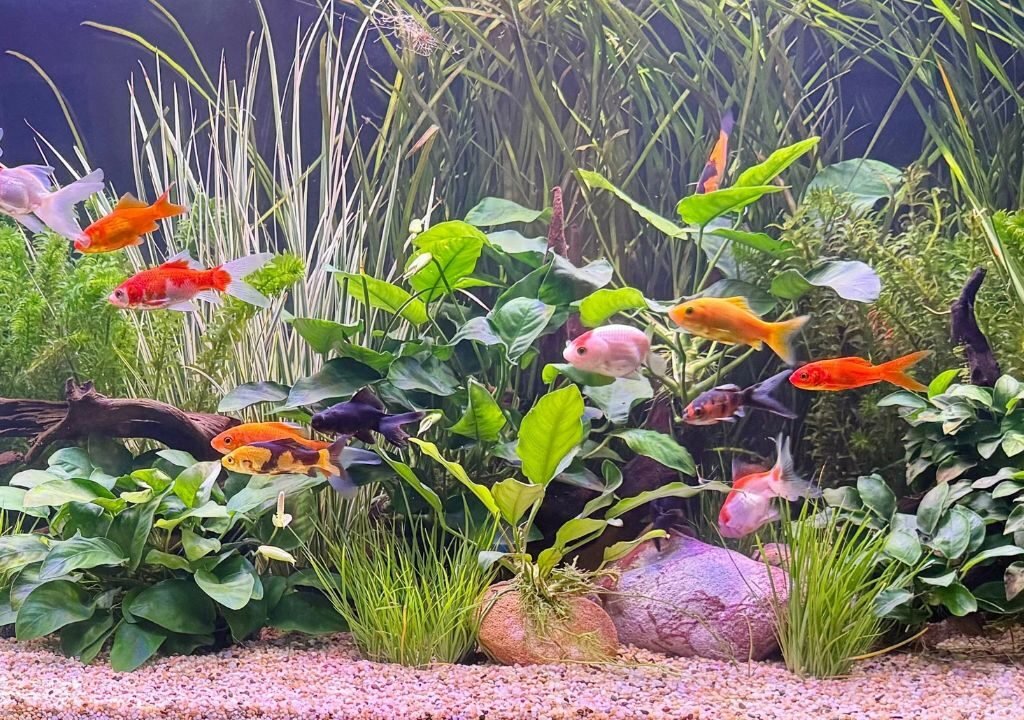
4. Vallisneria (Val)
Val looks like tall grass. It grows fast and spreads by sending out shoots.
- Light: Medium
- Growth: Fast
- Great for: Tall tanks, background areas
Val is perfect for the back of your tank. It fills space and gives fish shade.
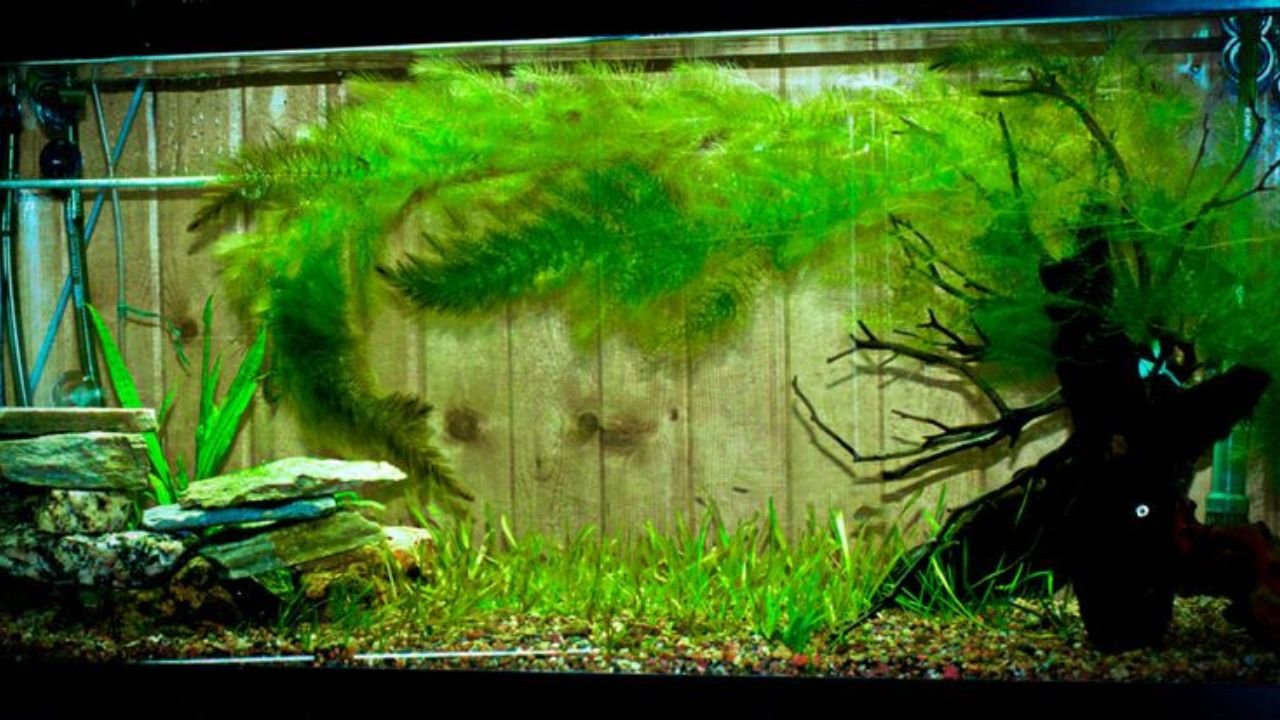
5. Hornwort
Hornwort can float or be placed in the gravel. It grows fast and is super easy.
- Light: Low to high
- Growth: Very fast
- Great for: Breeding tanks, algae control, new tanks
It helps clean the water and stops algae. Just know — if water changes fast, it may drop some leaves.
Adding live plants is one of the best things you can do for your fish. They help keep the water clean, boost oxygen, and make fish feel at home.
Start with one or two of these easy plants. Watch your tank come to life — and your fish will thank you!
Plants That Add Oxygen to Your Tank
Live plants help your fish breathe better. They make oxygen during the day when the lights are on. Some plants do this better than others.
Here are a few great choices:
- Hornwort – Grows fast and adds lots of oxygen
- Vallisneria – Tall and quick-growing; great for big tanks
- Amazon Sword – Big leaves help bring more air into the water
Tip: Mix short and tall plants. This helps oxygen move better and makes your tank look nice.
Plants That Help Clean the Water
Some plants do more than just look good—they clean the water too! These plants absorb extra waste and help stop algae from growing.
Try these top water cleaners:
- Hornwort – Absorbs extra nutrients quickly
- Amazon Sword – Takes in nitrates from the substrate
- Vallisneria – Grows fast and helps prevent algae
- Anubias – Slower-growing, but still helps clean over time
These plants work like little filters. They help keep the water safe and clear without chemicals.
New to live plants? Start with easy ones like Java Fern or Anubias. If you want fast growth and cleaner water, try Hornwort, Amazon Sword, or Vallisneria.

Easy Floating Plants for Beginners
Floating plants are super simple. They don’t need to be planted. They float on top and grow with little care. These plants block light, add oxygen, and clean the water.
If you’re asking:
- “Are floating plants easy?”
- “Do they help my tank?”
The answer is yes! They are perfect for new tank owners.
Best Floating Plants (No CO₂ Needed)
You don’t need fancy gear to grow these plants. Just light and water.
- Duckweed (Lemna minor)
- Light: Low to medium
- Growth: Very fast
- Good for: Cleaning waste and extra food
- Duckweed is tiny but grows fast. It covers the top of the tank. Just trim it often so it doesn’t block too much light.
- Amazon Frogbit (Limnobium laevigatum)
- Light: Low to medium
- Growth: Medium speed
- Good for: Shade, shrimp, and Betta tanks
- Frogbit has round leaves and long roots. Fish love hiding in it!
- Water Lettuce (Pistia stratiotes)
- Light: Medium
- Growth: Fast in big tanks
- Good for: Shade and water cleaning
- It looks like a green rose. It needs calm water. Splashing can hurt its leaves.
- Salvinia
- Light: Low to medium
- Growth: Medium speed
- Good for: Small tanks and shrimp
- Salvinia is soft and light. It grows slowly and is easy to control. It blocks light, so algae doesn’t grow too much.
Live plants help your tank in many ways. They:
- Add oxygen
- Clean the water
- Stop algae
- Give fish a place to hide
Start small. Try one or two plants. Soon, your tank will look better and feel healthier. You’ll love how easy it is to grow these plants!
Should You Keep Duckweed? Pros and Cons
Duckweed is one of the first floating plants many people try. It grows fast and helps clean the water, but it’s not the right choice for everyone.
Duckweed is great at soaking up ammonia and nitrate. It doesn’t need to be planted. Just drop it into your tank, and it will float and grow. It also grows well in low light, which makes it perfect for tanks that don’t have strong lighting. Duckweed helps clean the water by acting like a natural filter.
But there are some downsides. Duckweed grows very fast and can take over the surface of the water if you don’t trim it often. It may block light from reaching the plants underneath. Once it spreads, it can be hard to remove. Its tiny leaves stick to everything. Duckweed can also clog filters if it gets pulled into the intake.
To keep it under control, many people use a floating ring or create a clear spot on the surface where Duckweed can’t grow. This gives you the benefits without the mess.
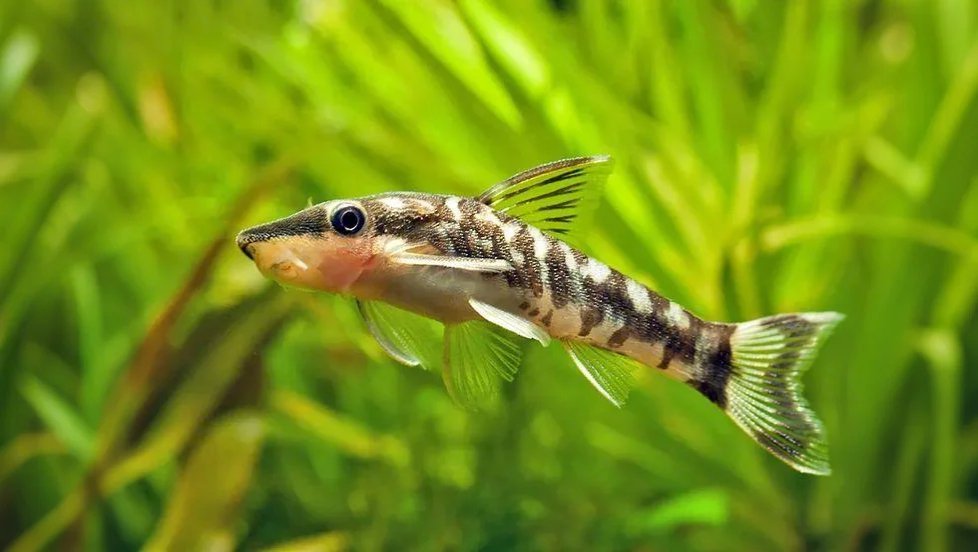
Do Aquarium Plants Need Substrate?
A common question for new tank owners is whether aquarium plants need to be buried in soil or gravel. The answer depends on the plant.
Some plants grow best in nutrient-rich soil. These are usually plants with strong roots, like Amazon Sword or Vallisneria. Special plant soil gives them food and helps their roots grow deep. This kind of setup works well for tanks with lots of plants, but it can be more costly and may cloud the water at first.
Other plants do well in plain gravel. These include Java Fern, Anubias, and Hornwort. These plants mostly take in nutrients from the water, not the soil. Gravel is cheaper and easier to clean. It may not have nutrients, but you can add root tabs to help the plants grow. Fine gravel is better than large pebbles because it holds the roots more firmly.
Some people keep their plants in small pots. This works well if you want to move them around or if you have a bare-bottom tank. Potted plants are easy to manage, but the roots won’t spread as much. It’s a good choice for shrimp tanks or temporary setups.
How Deep Should You Plant Aquarium Plants?
If you are planting your plants in soil or gravel, depth matters. If the plant has short roots, like Cryptocoryne, plant it one to two inches deep. If it has longer roots, like Amazon Sword, bury it two to three inches deep.
For plants like Java Fern or Anubias, do not bury the base. These plants have a rhizome, which must stay above the gravel. Instead, tie or glue them to rocks or driftwood. If you bury the rhizome, the plant will rot and die. Always make sure this part is above the surface.
Can You Replant Plant Cuttings?
Yes, you can grow many aquarium plants from cuttings. Plants like Hornwort, Water Wisteria, and Rotala are easy to trim and regrow.
First, cut a healthy stem just above a leaf. Remove the leaves from the bottom part of the stem. Then, place that part into the gravel or soil. Keep the water flow low to help the roots form. Over time, the stem will grow new roots and become a full plant.
Can You Keep Plants Without Substrate?
Some plants do not need to be planted at all. Floating plants like Duckweed, Frogbit, and Salvinia live on the surface and need no soil.
Epiphyte plants like Java Fern, Anubias, and Bucephalandra grow when attached to hard surfaces like rocks or wood. Even stem plants can grow in bare tanks if you use liquid fertilizer. These options are great for low-maintenance tanks and let you rearrange things easily.
Can Aquarium Plants Use Fish Poop as Food?
Yes! Live plants love fish poop. It’s one of the best ways to feed them. Fish waste gives plants what they need to grow. This makes your tank cleaner and easier to care for.
How Fish Poop Helps Plants
Fish poop puts ammonia in the water. Ammonia is bad for fish. But in a good tank, helpful bacteria turn ammonia into nitrite, then into nitrate. Nitrate is safe and feeds your plants.
Here’s how it works:
- Fish make waste
- Bacteria turn waste into nitrate
- Plants use nitrate to grow
- Plants clean the water
This is why live plants are so good for fish. They use fish poop to grow and help keep the water safe.
Tip: Fast plants like Hornwort and Amazon Sword are great at using nitrate.
Is Fish Poop a Good Fertilizer?
Yes. Fish poop is full of things plants need. It has nitrogen, phosphorus, and other small nutrients.
But to make it work, you need:
- A cycled tank (with helpful bacteria)
- Enough plants to use the waste
- Maybe extra food like iron or potassium (some plants need more)
Watch out: If you have too many fish and not enough plants, waste can build up. That leads to algae and dirty water.
What Helps Break Down Fish Waste?
Many things work together in your tank:
- Good bacteria: Turn poop into plant food
- Filter: Gives bacteria a place to grow
- Bottom feeders: Eat extra food and waste
- Plants: Use the nitrate to grow
This team keeps your water clean and safe.
Want a Tank That Cares for Itself?
Here’s how to build one:
- Pick Easy Plants
Choose strong, fast plants that love fish poop. Try:- Amazon Sword
- Hornwort
- Vallisneria
- Java Fern
- Water Wisteria
- Don’t Add Too Many Fish
Too much poop is bad. Pick fish based on your tank size and number of plants. - Add Substrate or Root Tabs
Some plants grow better with extra food in the gravel. If needed, use root tabs or special plant soil. - Do Small Cleanups
Even with plants, you still need to:- Change 20–30% of the water every two weeks
- Siphon extra dirt from the gravel
- Trim plants that grow too fast
- Watch Your Nitrate
Try to keep it below 40 ppm. If it gets too high, your tank may be off balance.
Plants and fish work great together. Fish give food. Plants clean the water. If you set things up right, your tank will almost run itself.
Live plants don’t just look nice — they help your fish live better, too.

